BY LAVINIA LIANG
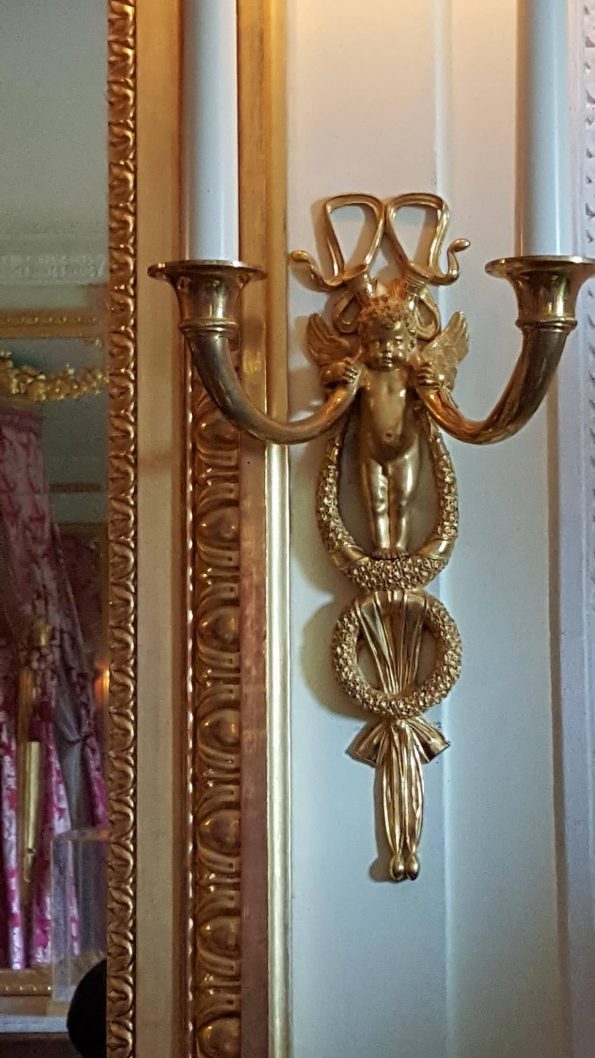
Bertrand Rondot is head curator at the Palace of Versailles. Rondot is an expert in the decorative arts, and specializes in the history of the furniture and artistic pieces of Marie Antoinette, the last queen of France. Marie Antoinette was also the last inhabitant of Petit Trianon. Although Petit Trianon was built in the 1760s by Louis XV for his official mistress, the small chateau later became the residence of Marie Antoinette, the proper wife of Louis XVI. Situated behind tall trees and at the end of an almost-fifteen-minute walk from the main palace, Petit Trianon became a sanctuary for the queen, away from the public scrutiny of life as royalty.
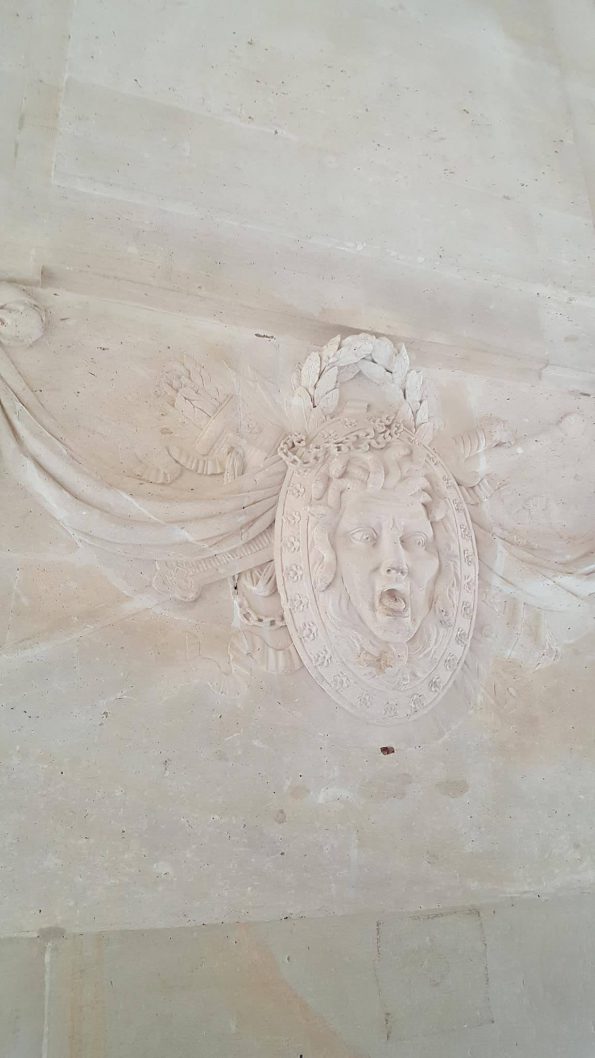
The architect of Petit Trianon, Ange-Jacques Gabriel, was famous for his use of the Neoclassical style, as well as his innovativeness. One example of Gabriel’s creativity is situated on a wall where the stairs turn direction between the two ground floors. The face of Medusa is molded onto the white stone, at once startling and subtle in its low relief. Usually, such a feature would be found on the exterior of a building. Rondot remarked that Jacques used “the vocabulary of outdoor architecture” and then brought it indoors.
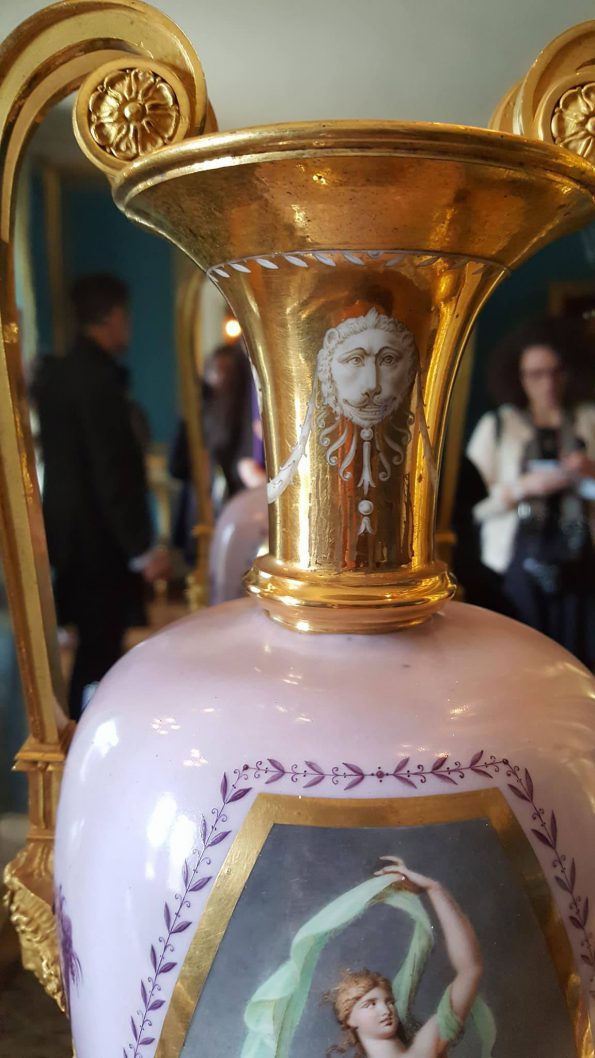
Other odd and even grotesque faces make their appearances throughout the rooms and bedrooms of Petit Trianon. A coin-sized lion-man face on the stem of a lavender vase. A gold-leaf baby bearing two elephant-trunk-like candleholders. Still other contorted or displeased faces are painted into the artworks that hang all throughout the chateau’s bedrooms. Perhaps, however, the most surprising and interesting face is the one that dominates the king’s room itself.
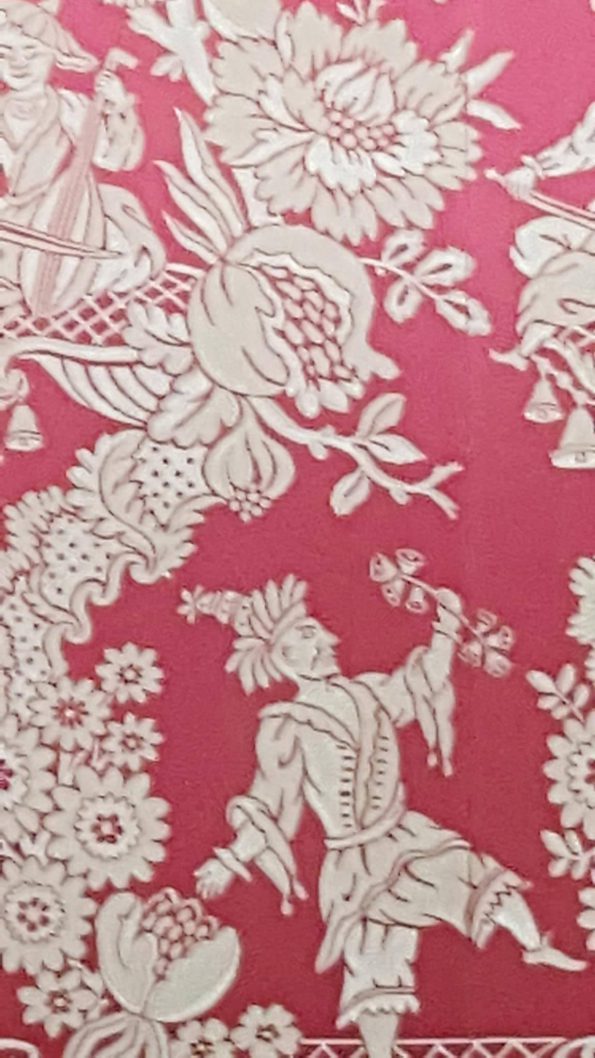
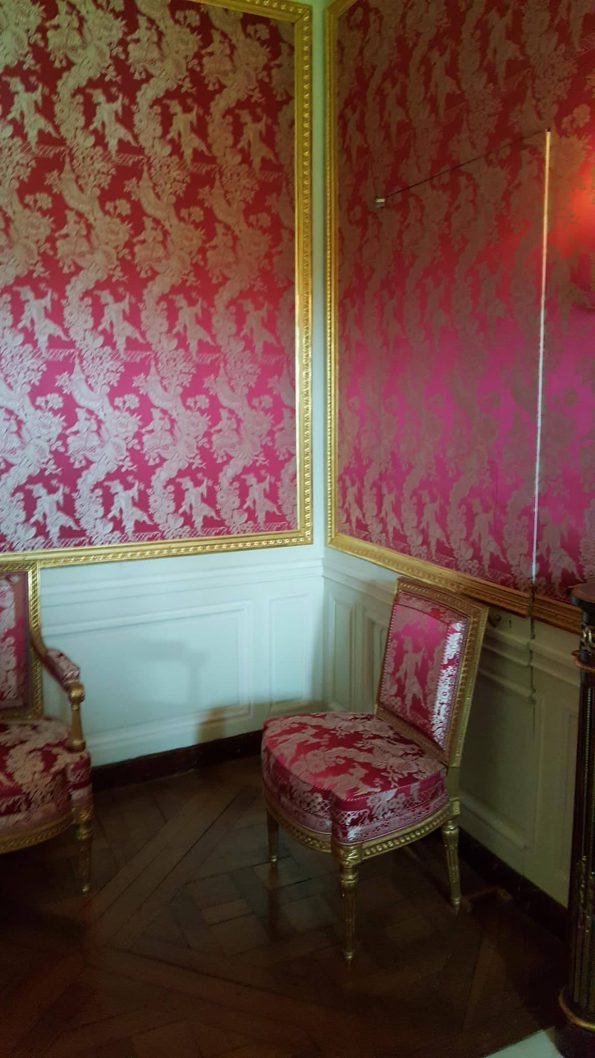
The face in question here indeed dominates the design of the room. Louis XVI’s bedroom at the Petit Trianon is lined with Chinese-inspired prints. Today, as with the other rooms in Petit Trianon, modern textiles recreate the originals in the king’s bedroom. The cushioned walls, the cushioned chairs, and the entire bedspread from curtains to pillow covers are covered with a silk red print that bears small figures of a Chinese man. On the left side of the room is a cabinet with Chinese-styled images on the front.
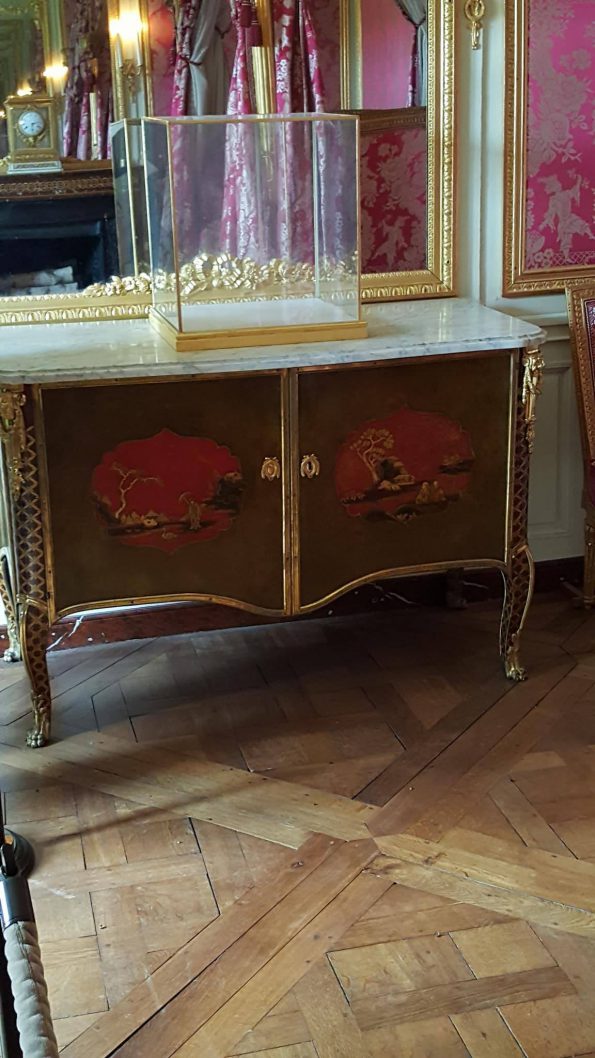
“As you know, the French are very reactive to new ideas,” Rondot said with a faint smile. What he initially meant was reactionary, that the French can be slow in accepting new ideas. But reactive works, too. Rondot related how East-West cultural exchanges became more and more prevalent in the 18th and 19th centuries: “For example, when they [the French] saw them [Indians] wearing white muslin robes, suddenly the European women were wearing them, too!”
